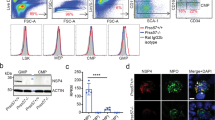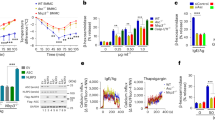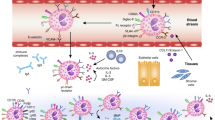Abstract
LIBERATION of factors chemotactic for eosinophil granulocytes is often associated with the release of histamine from mast cells and basophils. This is true for the eosinophil chemotactic factor of anaphylaxis (ECF-A), which is secreted together with histamine from mast cells and basophils1. It also applies to the generation of chemotactic factors by the activation of complement (C), which leads to the liberation of anaphylatoxin2. Therefore, it was of interest to study whether histamine had any effect on the migration of eosinophils towards chemotactic attractants. We describe here a factor which inhibits the migration of eosinophil granulocytes and which is released from mononuclear cells upon incubation with histamine.
This is a preview of subscription content, access via your institution
Access options
Subscribe to this journal
Receive 51 print issues and online access
$199.00 per year
only $3.90 per issue
Buy this article
- Purchase on Springer Link
- Instant access to full article PDF
Prices may be subject to local taxes which are calculated during checkout
Similar content being viewed by others
References
Kay, A. B., Stechschulte, D. J., Austen, K. F. J. exp. Med. 133, 602–619 (1971).
Müller-Eberhard, H. J. A. Rev. Biochem. 44, 697–724 (1975).
Click, D., v. Redlich, D., Juhos, E. T. & McEwen, C. R. Expl cell. Res. 65, 23–26 (1971).
Goetzl, E. J. & Austen, K. F. J. exp. Med. 136, 1564–1580 (1972).
Goetzl, E. J., Gigli, I., Wasserman, S. & Austen, K. F. J. Immunol. 111, 938–945 (1973).
Bourne, H. R., Melmon, K. L. & Lichtenstein, L. M. Science 173, 743–745 (1971).
Lichtenstein, L. M. & Gillespie, E. Nature 244, 287–288 (1973).
Plaut, M., Lichtenstein, L. M., Gillespie, E. & Henney, C. S. J. Immunol. 111, 389–394 (1973).
Fallah, H. A., Maillard, J. L. & Voisin, G. A. Ann. Immunol. 126, 669–682 (1975).
Melmon, K. L. et al. J. clin. Invest. 53, 13–21 (1974).
Rocklin, R. E. J. clin. Invest. 57, 1051–1058 (1976).
Clark, R. A. F., Gallin, J. I. & Kaplan, A. P. J. exp. Med. 142, 1462–1476 (1975).
Turnbull, L. W., Evans, D. P. & Kay, A. B. Immunology 32, 57–63 (1977).
Parish, W. E. Antibiotics Chemother. 19, 233–270 (1974).
Zigmond, S. H. & Hirsch, J. G. J. exp. Med. 137, 387–410 (1973).
Author information
Authors and Affiliations
Rights and permissions
About this article
Cite this article
KOWNATZKI, E., TILL, G., GAGELMANN, M. et al. Histamine induces release of an eosinophil immobilising factor from mononuclear cells. Nature 270, 67–69 (1977). https://doi.org/10.1038/270067a0
Received:
Accepted:
Issue Date:
DOI: https://doi.org/10.1038/270067a0
This article is cited by
-
The effect of histamine on the development of adjuvant arthritis in the rat
Agents and Actions (1982)
Comments
By submitting a comment you agree to abide by our Terms and Community Guidelines. If you find something abusive or that does not comply with our terms or guidelines please flag it as inappropriate.



